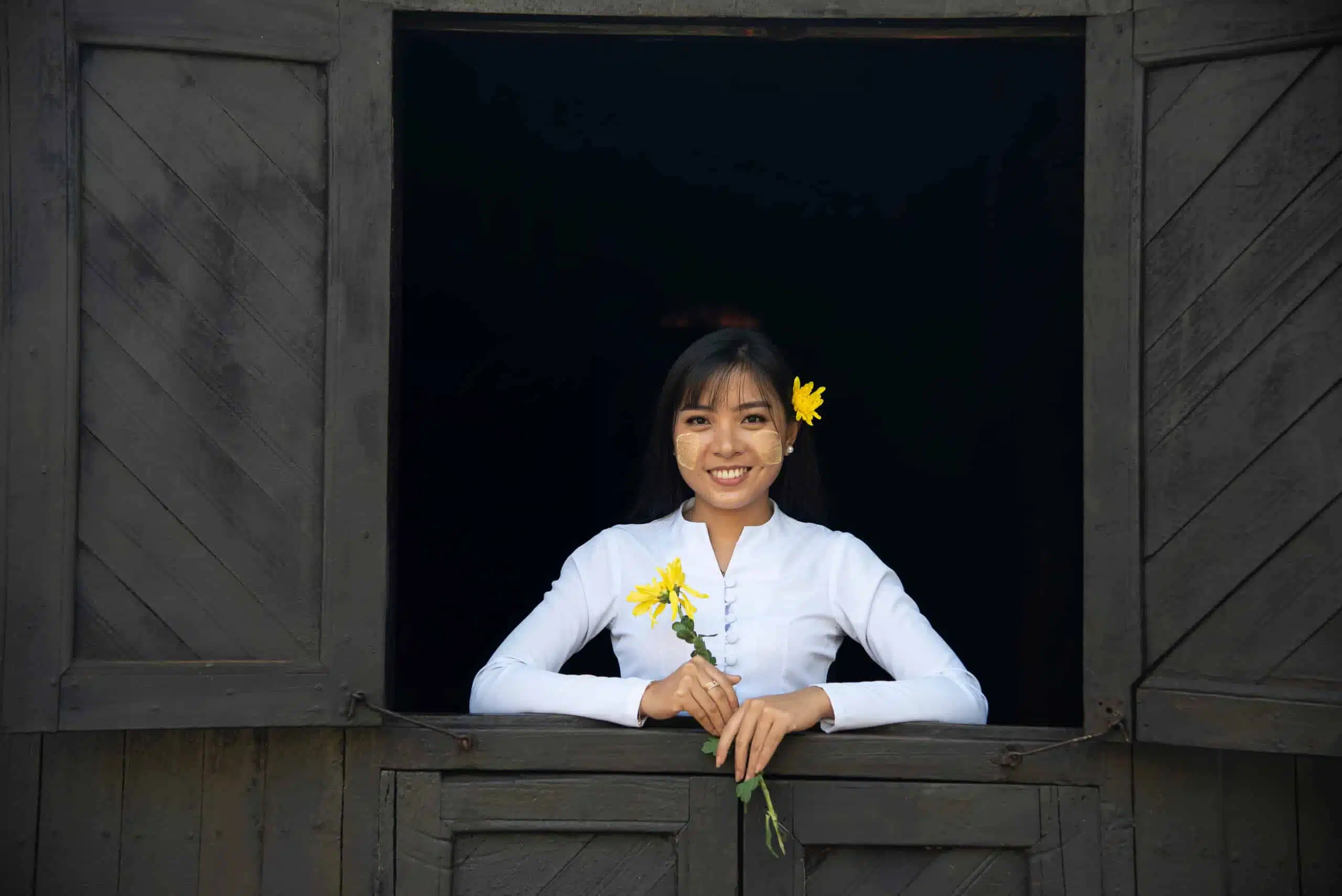Here’s what the Than-Bauk poetry form is:
The Than-Bauk is a Burmese tercet utilizing climbing rhyme.
It consists of three tetrasyllabic lines with a single rhyme that starts on the last syllable of the first line, then on the third syllable of the second line, and finally on the second syllable of the last line.
Than-Bauks are usually witty or humorous.
So if you want to learn all about the Than-Bauk poetry type, then you’ve come to the right place.
Let’s get right to it!

Forms of Poetry: The Than-Bauk

The Than-Bauk is a Burmese poem consisting of three lines (a tercet), with only four syllables per line.
This makes the relatively unheard of (in Western culture) Than-Bauk even shorter than the widely popular haiku, at just twelve total syllables.
Unlike most other poems of this size, the Than-Bauk actually does utilize rhyme.
The rhyme sound is not a classic end sound though and actually cascades backward from line to line, starting at the end of the first line and ending up as the sound of the second syllable of the third line.
As you might expect, this means that the rhyme will usually be monosyllabic, since the poem already has very little space to work with on the whole.
A Than-Bauk is a witty little poem that functions as an epigram, so it’s far removed from the decorative, flowery aesthetics that most people associate with poetry.
Basic Properties of the Than-Bauk

| Rhyme Structure | Strict |
| Meter | Four syllables per line |
| Origin | The Bamar people of Myanmar |
| Popularity | Still used by the Bamar; rare elsewhere |
| Theme | Typically humor |
How Is a Than-Bauk Structured?

While our introduction mostly answers this question, we will take a moment to showcase what this description looks like in diagram form.
The Than-Bauk, including its rhyme sound, ends up looking as follows:
xxxA
xxAx
xAxx
The ‘A’ represents the sole rhyme sound of the poem, while ‘x’ represents an unrhymed syllable.
It should be noted that this is only the basic Than-Bauk. As is typical of short forms, there do exist linked variants and Than-Bauk chains that extend the form outward, potentially indefinitely.
While the Than-Bauk is rather old, it remains a favorite of the Bamar people in Myanmar to this day, so it should be understood that the most modern variants will not necessarily mirror the traditions associated with the form perfectly.
Example of a Than-Bauk

When I feel blue,
I renew thoughts
of you and laugh.
The above example doesn’t have much wit to it per se, but twelve syllables is a frighteningly small amount to work with in English.
The main point to note is the rhyme sound of blue/ -new/ you that carries throughout the poem.
This is both the most noticeable and most challenging aspect of the Than-Bauk, since you have almost no space to set up the next end sound.
As a result, the poem will almost always favor one and two-syllable words.
Anything more than that becomes tedious to work with quickly, since the rhyme scheme immediately dominates three of the nine syllables.
Tips for Writing a Than-Bauk

While I’m of the opinion that this particular form is a bit too stringent for English, since so many of our common words are longer than one syllable, it’s certainly not impossible.
For starters, you’ll want to recognize that only common sounds are going to work well in the rhyme scheme.
Focus your attention especially on syllables dominated by vowels. Words like new, sky, and row give you plenty of options for how you’re going to handle the rhyme scheme since you can find those same sounds even mid-word in many cases.
Multisyllabic rhymes or those based on common suffixes, such as “-ation” and “-ity,” will not work nearly as well and will quickly become a burden on the poem as a whole.
As is typical of short poems, you only have enough room for a single thought or image.
In this form, especially, you can’t afford to waste even a single syllable on setting, characterization, etc.
The poem absolutely needs to get straight to the point instantly.
Having said all that, the Than-Bauk does represent a rather unique challenge.
If you master the form, or at least get somewhat comfortable with it, then you may want to try expanding it into linked Than-Bauks that play around with the structure.
Coming up with new interpretations of this form could make for an interesting project.
Imagine, for example, a than-bauk that uses eight syllables per line with two climbing rhymes per line instead of one.
Or a than-bauk that’s several tercets long and eventually cycles back to the original end sounds.
What might those look like?
Borrowing forms that already exist and iterating on them is one of the many ways that new ideas form, so it’s a little disappointing that a form with so much potential sees so little experimentation in the west.
Whether you’re just writing a Than-Bauk that stays true to the rules or inventing your new take on the poem, it will surely give you something interesting to play with for an afternoon or two.
Poet’s Note

If people were just reaching out to grab any random form that has a small number of syllables, then surely there would have been more demand for this one by now.
I feel that the rhyme scheme may make it less accessible to some, but those seeking a new challenge should really be looking for forms like this instead of writing the same old sonnets and haikus over and over.
Comprehensive Collection of Poetry Forms: Craft Words Into Art

Dare to traverse the entire spectrum of poetic forms, from the commonplace to the extraordinary?
Venture from the quintessential Sonnet to the elusive Mistress Bradstreet stanza, right through to the daunting complexity of Cro Cumaisc Etir Casbairdni Ocus Lethrannaigecht.
For those with a zeal to encounter the full breadth of poetry’s forms, this invitation is yours.
Start exploring the vast universe of poetic ingenuity with our comprehensive array of poetry forms right now!
